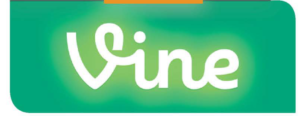2016 is nearing an end, and it’s a good time to take a step back and reevaluate your marketing methods as you head into the New Year. It’s important to recognize that a few of the marketing tactics and tools that loomed large as the year started have already faded into obscurity. So which marketing trends have run their course? Let’s look at the marketing fads that burned out in 2016.
The Infamous Vine Clip
 You most likely have heard of Vine. It’s a video-sharing app that enables users, including businesses, to share six-second videos, or “Vines”, with their followers.
You most likely have heard of Vine. It’s a video-sharing app that enables users, including businesses, to share six-second videos, or “Vines”, with their followers.
While video content is still a popular and useful tool as we head into 2017, Vine does not appear to be taking off as an effective means of branding and marketing businesses. Instead of spending money on Vine marketing, consider using your video budget elsewhere to maximize the return on your investment.
 Usage of QR Codes
Usage of QR Codes
For a while, QR codes were a big fad. It seemed as if nobody sent out a marketing text or email without a QR code, and customers happily presented their smart phones at check out so that cashiers could scan the codes for a discount or coupon.
However, QR codes seem to have largely run their course. The primary reasons for their demise are:
- QR code scanners tend to be glitchy and ineffective, and that can lead to frustration for consumers.
- The overall conversion rate for QR codes is extremely low, rendering the ROI on using them negligent at best.
While mobile marketing is certainly on the rise, QR codes are a trend best left behind.
The Yellow Pages Approach
 While in many ways, advertising in the print yellow pages might seem outdated, a surprising number of companies still utilize this method. However, the overwhelming majority of consumers in the United States own smart phones, and as a result, they are far more likely to search for business using their phones than they are to turn to a book.
While in many ways, advertising in the print yellow pages might seem outdated, a surprising number of companies still utilize this method. However, the overwhelming majority of consumers in the United States own smart phones, and as a result, they are far more likely to search for business using their phones than they are to turn to a book.
If you’re unwilling to give up your ad in the yellow pages, rethink that the cost of print advertising is far higher than that of advertising through the web. You can still list your business in local business guides, online directories, and professional associations. Many of those places do not charge fees for listings, making them a far more affordable choice than any form of print advertising.
Marketing for Desktop Computers
While many consumers still use laptops and even desktop computers to search and conduct business online, the fact is that as of 2015 mobile searches on Google outstripped desktop searches. That is a trend that will very likely continue, and yet many businesses are still in denial about the reality and what it means for their marketing strategies for the future.
The smart way to make money in marketing for 2017 is through mobile marketing. You’ll notice a much higher return on your investment than you would with desktop marketing. Mobile marketing allows businesses to send out highly-targeted messages using sophisticated technology such as geofencing. It makes sense to reconfigure your marketing budget to allow for decreasing your desktop marketing and increasing your mobile outreach.
Organic Methods Regarding Search
Google isn’t leaving anytime soon, but the fact is that as its algorithms grow increasingly more complex, it gets harder and harder for companies to generate any traffic at all as a result of organic search.
Why? Because Google has moved away from being a true search engine and toward being a predictor of human behavior. Search results are targeted by geographical area and refined based on past behavior. A consumer who does repeated searches for businesses in downtown Boston is likely to get only downtown business even if she does a search for “Boston florists” based on her past behavior.
SEO is still prevalent, but it’s likely that businesses will begin to place less emphasis on achieving a high organic search rank and more on the kind of targeted marketing that will ensure that the people who need to see their ads actually see them.

Non-Engaging Social Media Posts
Social media continues to be an important factor in online marketing and advertising. Companies are utilizing social giants Facebook and Twitter, as well as newer sites such as Pinterest, Instagram, and Snapchat, to reach their customers base.
As social media use rises, companies are becoming increasingly sophisticated in the way they approach their social media strategies. It’s no longer useful simply to blanket your Twitter feed with unrelenting direct sales pitches. The most effective social content is content that encourages your followers to communicate with you directly.
Examples include posts that ask followers to create their own content, or posts that ask a question. The more engagement you get with your followers, the more likely you are to create brand loyalty and turn casual followers into paying customers.
 Inability to Combine Excellent Customer Service with Social Media Tactics
Inability to Combine Excellent Customer Service with Social Media Tactics
In terms of social media, the final trend to leave behind is any urge you might have to keep your customer service separate from social media. Customers expect to be able to ask questions and register complaints on social platforms, and the companies who get the highest ratings for customer service have embraced that trend and used it as strength.
Instead of rejecting the idea of Facebook being a domain where customers come to ask questions, look at it as an opportunity to engage with them and assist them in a public way. Even a negative comment can turn into a net positive for your business if your social media team responds properly and promptly. Offer apologies when necessary, and calm solutions whenever possible. And if by chance a problem is too big to deal with on social media, you can provide the customer with contact information or send them a private message to handle it offline.
The key to marketing success in the New Year is to take the time to assess your marketing strategy, revise it as necessary, and reallocate funds to the campaigns and tactics that are most likely to succeed in 2017.
